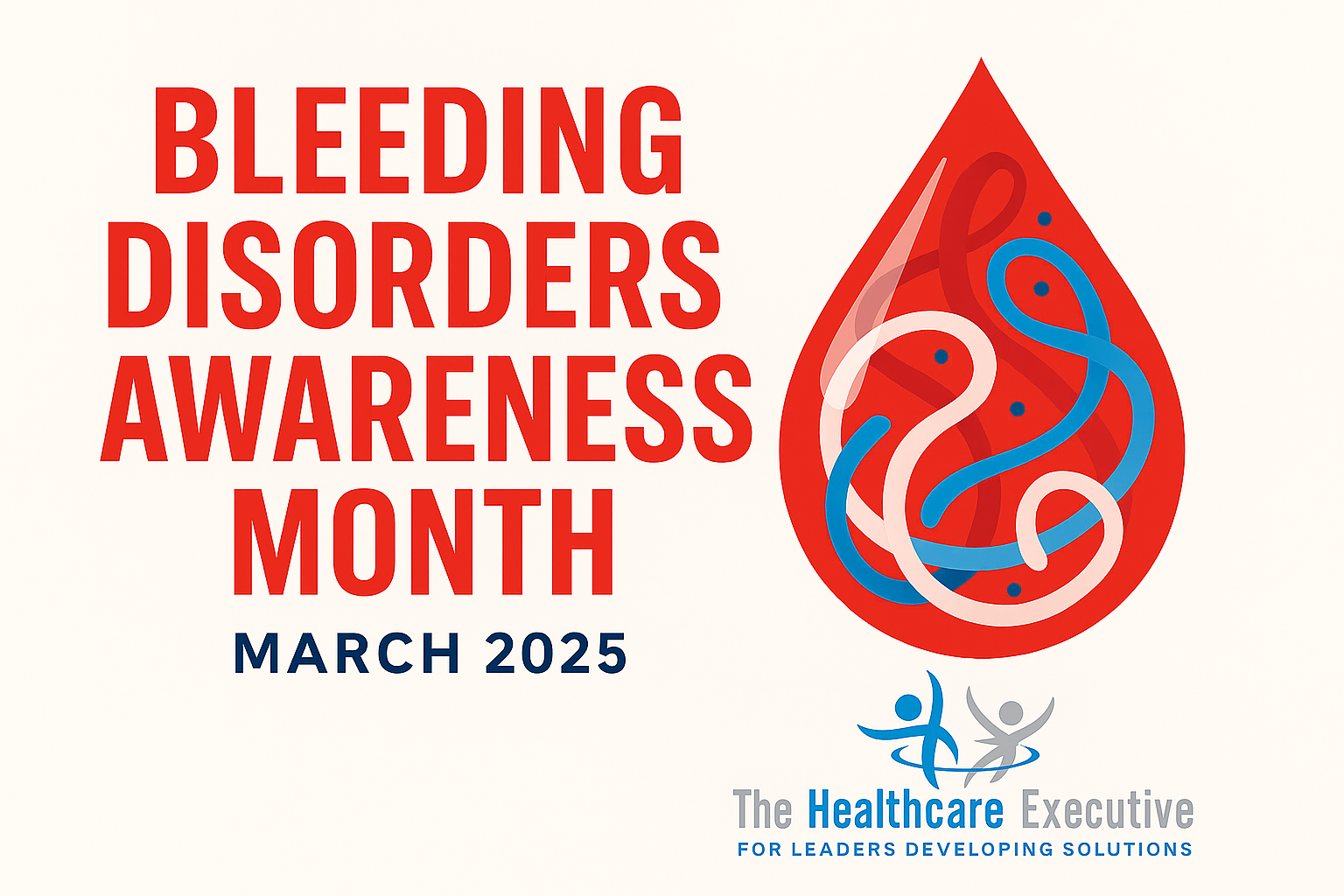Bleeding Disorders Awareness Month 2025: Executive Strategies for Equity and Early Detection

- Posted by Greg Wahlstrom, MBA, HCM
- Posted in Health Observance Calendar
How Hospital Leaders Can Strengthen Access, Coordination, and Lifesaving Diagnosis
Published: March 1, 2025
Bleeding Disorders Awareness Month, observed every March, calls attention to rare but life-altering conditions like hemophilia, von Willebrand disease, and platelet function disorders. These conditions often go undiagnosed for years, particularly in underserved populations. For healthcare executives, this awareness month is a strategic opportunity to spotlight gaps in equity, early detection, and long-term care coordination. At Children’s Hospital of Philadelphia, care teams embed genetic counselors and social workers into hematology clinics to streamline diagnosis and follow-up. Hospital leaders across the country must ensure their institutions are not only equipped to diagnose rare disorders but also committed to sustained, equity-driven treatment plans.
Diagnostic delay remains a critical issue. Many bleeding disorders present with non-specific symptoms like bruising, nosebleeds, or prolonged menstrual cycles—often misattributed or dismissed. Boston Medical Center has launched a multidisciplinary effort to integrate hematologic screening into primary care and gynecology workflows, ensuring earlier identification in women and girls. Hospital CMOs must lead the charge by embedding screening protocols and clinical education across departments. Access to accurate testing and clear referral pathways should be a benchmark of quality, not a luxury. Executive support can transform bleeding disorder diagnosis from reactive to proactive—saving both lives and long-term costs.
Health equity is central to any meaningful strategy. Studies show that women and people of color are underdiagnosed and underrepresented in bleeding disorder registries and trials. The CDC reports significant racial disparities in time to diagnosis and access to comprehensive care. Systems like Rush University Medical Center have expanded community partnerships and telehealth hematology consults in urban and rural areas to reduce structural barriers. Executive teams must view these disparities as solvable through leadership, funding, and measurable accountability. Equity in care begins with visibility in strategy.
Care coordination across the lifespan is also essential. Bleeding disorders require ongoing treatment, often involving factor replacement therapy, physical rehabilitation, and psychosocial support. At Oregon Health & Science University, a transition program guides adolescent patients from pediatric to adult care, reducing gaps in continuity. CEOs must allocate resources to case management, transition planning, and integrative care platforms that prevent medical emergencies and re-hospitalizations. Quality of life for bleeding disorder patients improves dramatically when leaders align their systems around coordinated, long-term support.
Ultimately, Bleeding Disorders Awareness Month 2025 should catalyze a broader conversation about hospital responsibility, public health engagement, and diagnostic inclusion. How do your EHR systems capture bleeding disorder risk? How many of your providers have received training in inherited hematologic conditions? Are your community outreach programs reaching women, girls, and communities of color? These questions must be addressed at the board level. Hospital executives must recognize that solving for rare disease visibility requires not just clinical skill—but organizational will.
Discover More on Building Strategic Clinical Inclusion
To better understand how executive leaders can drive early detection, workforce education, and inclusive care protocols, explore our post on clinical trust-building in 2025.
Internal Links
- Rebuilding Trust in U.S. Healthcare: A Leadership Blueprint
- AI in the C-Suite: Redefining Decision-Making for Healthcare Executives



